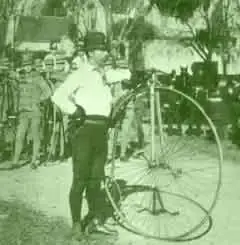Thanks Graham.Hi Max and welcome to RetroBike.
Thanks for providing a link to the 1963 Roughstuff Journal article by John Finley-Scott. This used to be available online but was taken down so. it's good to see it again.
With regards to the John Padgett 650b bike, accounts of its age vary from 1960s to the much later date posted with the following photo of 1978:
View attachment 761511
From other photos I can see that the bike had 650b Super Champion 58 rims who's production time would date the bike to 1970s-early 1980s. So 1978 is probably accurate. Interestingly, this would be around the same time that Tom Ritchey says that Finley-Scott ordered a 650b rough-stuff frame from him.
I know that a specialist rough-stuff bike could be ordered from Jack Taylor. I also understand that Archie Woodward, the Roughstuff Journal editor from 1969-1991, would refuse to publish technical articles. Therefore, it seems unlikely that such bikes were ever reported on? Do you happen to know if adverts for custom-built bikes like the Jack Taylor bike ever appeared in the Journal?
I've looked through a good number of the journals (there's a full set in the archive) and never have seen any bike adverts. There are specific 'Rough-stuff' shoe adverts though!
Also having seen a lot of the 40,000+ photos in the archive, I can't say either I or the archivist have remarked on any obviously adapted bikes. The bikes seem to be mainly very standard tourers with 700C or 27" wheels (Dawes, Claud Butlers), with a few nice lightweights thrown in (curly Hetchins, Jack Taylors).
I've heard the same about Archie Woodward, and it does seem to be true, given the articles.
In the second book we made, we included a few good articles from the early/mid 80s debating both sides of whether these new mountain bikes were acceptable RSF transport. There were strong opinions (as there are about ebikes now), but later in the 80s they seemed to be accepted.
